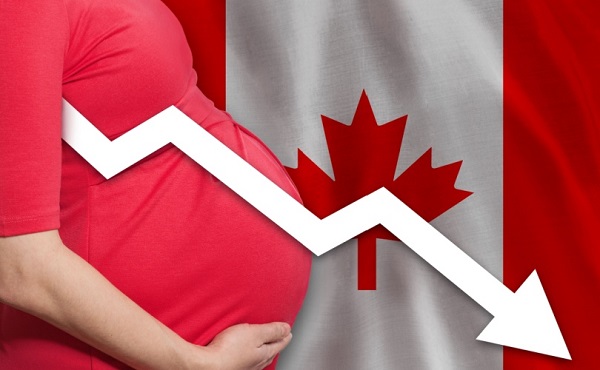Alberta
Update 19: Northwest Alberta wildfires (June 12 at 5 p.m.)

June 12, 2019
Evacuation orders have been lifted for Bigstone Cree Nation and the Hamlets of Wabasca-Desmarais, Sandy Lake and Chipewyan Lake. More than 3,700 people are now able to return home.
To date, more than 9,800 evacuees from the following communities have been approved to return home:
- High Level
- Mackenzie County
- Dene Tha’ First Nation
- County of Northern Lights, south of Twin Lakes Campground including Notikewin
- Marten Beach (MD of Lesser Slave Lake)
- Keg River/Carcajou
- Peerless and Trout Lake communities
- Bigstone Cree Nation 166 A, B, C and D
- Municipal District of Opportunity 17
- Hamlet of Wabasca-Desmarais
- Hamlet of Sandy Lake
- Hamlet of Chipewyan Lake
Evacuees returning received re-entry packages with advice on what to do when they arrived home.
Evacuees can find tips on re-entry by visiting https://www.alberta.ca/emergency.aspx. Information includes making sure all your utilities are working, cleaning up and how to deal with door-to-door salespeople offering services and insurance.
Approximately 700 evacuees are displaced due to a mandatory evacuation order for Paddle Prairie Metis Settlement.
The following communities remain on evacuation alert:
- Bigstone Cree Nation 166 A, B, C and D
- Hamlet of Wabasca-Desmarais
- Hamlet of Sandy Lake
- Hamlet of Chipewyan Lake
- County of Northern Lights
- North of Township Road 910 to the north county border, including the Twin Lakes Campground, Keg River, Carcajou and the Town of Manning
Current situation:
- Chuckegg Creek wildfire, southwest of High Level, is about 269,648 hectares.
- Jackpot Creek wildfire, approximately 11 kilometres north of Lutose, is about 28,167 hectares.
- McMillan Wildfire Complex, southwest of Bigstone Cree Nation, is more than 263,969 hectares.
- Battle Wildfire Complex in Peace River is about 55,179 hectares.
- There are more than 2,000 wildland and structural firefighters and staff, approximately 159 helicopters and 22 air tankers and 233 pieces of heavy equipment on these fires.
- Check Alberta Emergency Alerts for more detailed and frequently updated information.
- People driving in fire-affected areas should carry enough fuel, as it may not be readily available.
- Be cautious of organizations not registered to solicit donations. For information on how you can help, visit https://www.alberta.ca/emergency.aspx.
Visit alberta.ca/emergency for detailed and frequently updated information.
Air quality
- Parts of northwestern Alberta are under a special air quality statement, including High Level, Peace River and Wabasca.
- Visit FireSmoke Canada for information and resources about smoke from wildland fires.
Financial supports
- Evacuees should check alberta.ca/emergency for updates on evacuation payment eligibility.
- Evacuees in need of financial assistance for immediate needs can apply for an Income Support program emergency needs allowance. This benefit may cover your accommodation, clothing and other urgent needs. Please call 1-877-644-9992 for more information.
- You may qualify for the evacuation payment if you:
- were living, working or vacationing in the affected area
- were forced to leave due to an evacuation order
- paid for most of your costs to evacuate
- were forced to leave your residence (primary, working or vacationing) due to a mandatory evacuation order – current communities include:
- High Level
- Paddle Prairie Metis Settlement
- Bushe River
- Chateh
- Meander River
- Wabasca-Desmarais
- Bigstone Cree Nation 166 A, B, C and D
- Sandy Lake
- Chipewyan Lake Village
- Keg River
- Carcajou
- Northern border of the County of Northern Lights to Township Road 922 (Notikewin Road)
- Steen River
- Trout Lake
- Albertans who qualify will receive $1,250 and $500 for each dependent child under 18 living in the same home when the evacuation order was given.
- Application methods:
- Apply online through the MyAlberta Evacuation Payment application using a smartphone, device or desktop. Interac e-transfers may take 24 hours to process.
- All payment distribution centres are now closed.
- If you need help applying, contact Alberta Supports to find the nearest centre: Toll free: 1-877-644-9992 (Monday to Friday, 7:30 a.m. to 8 p.m.) In-person: Find an Alberta Supports Centre.
- More than 11,400 individuals have received evacuee support totaling close to $11.6 million.
Reception and call centres
- All evacuees should register with an evacuation reception centre, even if you’ve found alternate accommodations.
- Reception centres are assisting evacuees either in person and/or by phone:
- Grande Prairie – 780-567-5587
- Peace River Town Hall (9911 100 Street) – 780-624-2574
- Wabasca-Desmarais Lakeview Sports Centre (102 Opportunity Drive) – 780-891-2659
- Dene Wellness Centre – 1-867-874-2652
- Evacuation reception centre hours can be found at alberta.ca/emergency.
- The Government of Alberta contact centre is open from 8 a.m. to 6 p.m., Monday to Friday. Call 310-4455.
Highway updates
- To stay informed on all road closures due to the wildfires, visit 511.Alberta.ca or download the mobile app.
Insurance information
- Most home and tenant insurance policies provide coverage for living expenses during an evacuation.
- Evacuees should retain all of their receipts for food, accommodation and other related expenses to provide to their insurer.
- Albertans can contact the Insurance Bureau of Canada at 1-844-227-5422 or by email at [email protected]. Information about insurance coverage is available online at ibc.ca/ab/disaster/alberta-wildfire.
Justice and legal matters
- Community Corrections and Release operations have resumed in High Level.
- High Level Court is open.
- Chateh Court matters will be heard in High Level Court until further notice. Call 780-926-3715 for inquiries.
- Fort Vermilion Court matters have resumed. Call 780-926-3715 for inquiries.
- Wabasca-Desmarais matters will continue to be held in High Prairie until further notice. Call the High Prairie Court at 780-523-6600 regarding any matters scheduled.
Education
- The schools of Fort Vermilion School Division will remain closed for the remainder of the school year. Students wishing to write a diploma exam, Grade 6 or Grade 9 provincial achievement tests should make arrangements with the Fort Vermilion School Division. For further information visit: fvsd.ab.ca.
- School officials in fire-impacted areas will address the impacts of disruption on the academic program and school year. Students or their guardians should watch for online or direct communications from local school authorities about specific changes.
Provincial park closures
- All provincial parks that were temporarily closed due to the threat of fire have reopened.
- Calling Lake Provincial Park campground is currently supporting evacuees. The boat launch in Calling Lake remains open.
- Current information about fire bans, restrictions and closures in provincial parks and campgrounds is available at http://www.albertaparks.ca/
Boil water advisory
- A boil water advisory is in place for Meander River (Dene Tha’ First Nation).
Health
- Wabasca-Desmarais Healthcare Centre is now open.
- Mental health support is available by calling Alberta’s 24-hour help line at 1-877-303-2642, the Addiction Helpline at 1-866-332-2322, or Health Link at 811.
- The Northwest Health Centre in High Level is open.
- Alberta Health Services is providing enhanced addiction and mental health services to help residents in High Level following the evacuation.
- New, temporary walk-in services for individuals experiencing addiction and mental health concerns are available seven days a week from 11 a.m. to 7 p.m. at the Mental Health Clinic at Northwest Health Centre in High Level. For more information, please call the clinic directly at 780-841-3229.
- Alberta Health Services has relocated acute patients and continuing care residents from La Crete and Fort Vermilion to health facilities in Edmonton and surrounding communities.
- The emergency department at St. Theresa General Hospital in Fort Vermilion remains open.
Pets and livestock
- High Level animal control has collected household pets that have been left behind. For questions regarding your pets, please call 780-926-2201.
- For evacuees in the Wabasca area, please fill out an online form on the Alberta Animal Disaster Response Facebook group, or text 403-869-4964 and provide your name, contact number, number of animals missing, where they were last seen, and a brief description of your pet.
- The County of Northern Lights will allow residents to enter property to look after livestock between 7 a.m. and 10 p.m. Residents must first go to the county office to register for the temporary access pass.
Electricity and natural gas billing
- High Level and area residential, farm, irrigation and small commercial electricity and natural gas customers will not be billed for the period covered by the evacuation order.
Donations and volunteers
- High Level is not accepting donations or volunteers at this time.
- The Town of Slave Lake has set up an online form for offers.
- Check the Mackenzie County Facebook page for an up-to-date list of donations needed and drop-off locations.
- There have been reports that local residents in High Level are being solicited by email or phone for donations in support of firefighters or affected residents. Do not share your personal information with them or donate money.
- When asked for donations (either over the phone, through an e-mail, or in person), ask the canvasser for identification or printed information about the charity.
- If you have concerns about the activities of a charitable organization including its fundraising practices, call Service Alberta: 1-877-427-4088.
Canada Post
- Mail and parcel delivery in certain communities has been affected by the wildfires.
- Canada Post has contingency measures in place to serve residents of these communities.
- Check the Canada Post website for updates.
Other income and social supports
- Evacuees who receive Assured Income for the Severely Handicapped or Income Support benefits by cheque should contact their worker to make arrangements to receive it.
- Call Alberta Supports at 1-877-644-9992 between 7:30 a.m. and 8 p.m., Monday to Friday if you:
- need information on other social supports
- are a contracted service provider, family member or individual needing assistance through the Persons with Developmental Disabilities program
- For information on child intervention and child care, call 1-800-638-0715.
- Employment insurance: evacuees can visit Service Canada online to apply at www.canada.ca/en/services/benefits/ei.html. Use code 4812014812201900.
Health card, driver’s licences, ID cards, birth certificate
- To get a replacement Health Care Insurance Card call 780-427-1432 or toll free at 310-0000 and then 780-427-1432 when prompted. Your Alberta Personal Health Card can be mailed to a temporary address.
- If driver’s licences, identification cards, and/or birth certificates were left behind during the evacuation, replacement cards and certificates can be ordered free of charge at a registry agent.
Public information
- You can call 310-4455 for more information – Monday to Friday 8 a.m. – 6 p.m.
Related information
Alberta
Sheriffs shut down Olds drug house
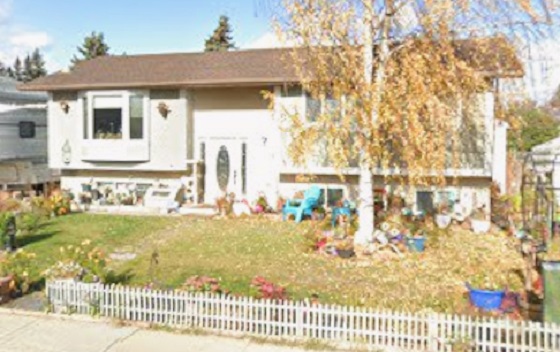
News release from the Province of Alberta
The Alberta Sheriffs have shut down a problem property where suspected drug activity threatened nearby playgrounds and other community spaces.
The Safer Communities and Neighbourhoods (SCAN) unit of the Alberta Sheriffs obtained a court order against the property owner of 5222 42 Street. The property will be closed for 90 days, beginning on Oct. 7 at noon. All individuals must vacate the premises, including the property owner.
The community safety order, obtained in the Court of King’s Bench, bars all people from the property until the closure period ends on Jan. 5, 2026, and prohibits certain individuals from accessing the property altogether, while the order is in place. The property will be boarded up, fenced and all the locks will be changed. SCAN members will continue to monitor the property for activity while their investigation remains ongoing. Community safety order conditions remain in effect until Jan. 5, 2028.
“SCAN now adds Olds to the long and growing list of Alberta communities that have benefited from its diligent investigative work. My thanks to members of the southern SCAN unit and the RCMP for the closure of another disruptive problem property that posed a risk to nearby playgrounds and the surrounding community and threatened public safety. Criminal activity has no home in our province. I encourage all Albertans to report suspicious activity where and when they see it.”
“Close collaboration with local police was essential for a successful investigation of this property and I thank the Olds RCMP for its partnership on this file. Residents are relieved to see this property close, putting an end to the illegal activities centred around it. Here and across Alberta, SCAN is dedicated to maintaining the peace and safety of neighbourhoods and communities.”
“Olds RCMP remains fully committed to building safer communities by working in partnership with our community as well as through investigative and enforcement efforts to achieve this goal. Olds RCMP would like to thank the Olds RCMP crime reduction member on conducting an excellent investigation and the Alberta Sheriffs SCAN unit for its assistance during this project.”
The Alberta Sheriffs work with other law enforcement agencies to shut down properties being used for illegal activities. The SCAN unit operates under the Safer Communities and Neighbourhoods Act, which uses legal sanctions and court orders to hold owners accountable for illegal activity happening on their property.
Since its inception in 2008, Alberta’s SCAN unit has investigated more than 10,000 properties and has issued more than 135 community safety orders. Most complaints are resolved by working with owners to stop the illegal activity on their property.
Quick facts
- Between February 2022 and May 2025, the RCMP attended the property 65 times for various types of calls for service.
- The RCMP executed three search warrants between January 2024 and April 2025, during which stolen property, illegal drugs and drug paraphernalia were recovered.
- SCAN investigators and the RCMP continued to receive complaints of suspected drug and criminal activities at the property throughout the course of their investigation and observed activity consistent with drug dealing.
Alberta
‘Visionary’ Yellowhead Pipeline poised to launch Alberta into the future
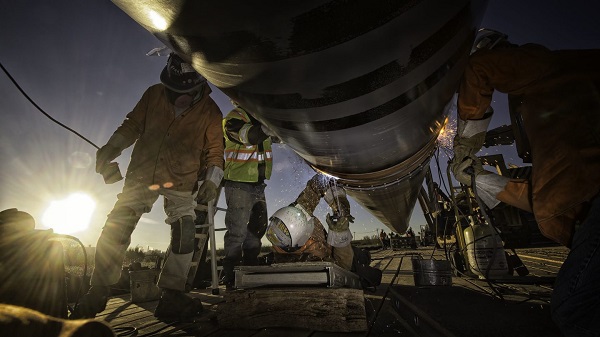
From the Canadian Energy Centre
Heartland leaders welcome proposed new natural gas connector
As a lifelong farmer, entrepreneur and community leader, Alanna Hnatiw knows first-hand the crucial role energy plays in a strong and diverse economy.
The mayor of Sturgeon County, a sprawling rural municipality northeast of Edmonton, Hnatiw has spent much of the last decade working to protect its agricultural roots while building new industries that support the jobs and services families and businesses rely on every day.
Hnatiw says there is widespread appreciation among the county’s 20,000 residents for the opportunities afforded by the province’s oil and gas resources. That’s why she joined other leaders in Alberta’s Industrial Heartland region to applaud a major new natural gas pipeline planned for the area.
“Natural gas is an integral to all the industrial operations in Sturgeon County and the surrounding area. It goes beyond just burning it to turn turbines, it is the feedstock for all kinds of value-added processing. From fertilizer and plastics to petrochemicals and hydrogen, natural gas is the lynchpin for us into the future,” she said.
Filling growing demand
Hnatiw is one of more than a dozen community and industry leaders who sent letters of support to the Alberta Utilities Commission (AUC) last year endorsing ATCO Energy Systems’ proposed Yellowhead Pipeline project.
The project achieved a significant milestone in August when the AUC approved ATCO’s application determining the pipeline is needed.
The largest infrastructure investment in the company’s history, the 230-kilometre pipeline from Peers to Fort Saskatchewan will transport more than 1.1 billion cubic feet of natural gas per day when operational in late 2027.
For context, Alberta produced about 11 billion cubic feet per day of natural gas in 2024, according to the Alberta Energy Regulator.
The Yellowhead Pipeline will boost deliveries to the greater Edmonton area as demand continues to grow for power generation, manufacturing, petrochemical processing and residential use.
Industrial customers have reserved 90 per cent of the pipeline’s capacity to meet their future needs.
This includes Dow Chemical, which plans to build an $8.9-billion net-zero ethylene processing facility in Fort Saskatchewan, Heidelberg Materials’ Edmonton facility that aims to be the world’s first full-scale cement plant equipped with carbon capture and storage (CCS), and McCain Foods, which requires more natural gas for a planned expansion of its French fry factory in Coaldale.
Prosperity driver
Edmonton Global CEO Malcolm Bruce described the Yellowhead Pipeline as a “visionary” infrastructure project in his letter of support to the AUC.
“The [project] will create jobs, enable billions in new investment and drive Alberta’s hydrogen roadmap and natural gas vision and strategy.”
ATCO’s projections show the pipeline will generate substantial economic benefits. The company estimates that during construction, it will support 12,000 jobs and contribute $1.6 billion per year to Alberta’s economy.
Once in operation, the pipeline is expected to support 23,700 jobs per year and add $3.9 billion annually to Alberta’s GDP.
For Sturgeon County, the project also provides much-needed certainty that natural gas will be available for the $30 billion in new industrial investments the region is hoping to attract in the coming years.
Future plans
The municipality is already home to major operations including the NWR Sturgeon Refinery and Nutrien fertilizer plant, both of which capture carbon dioxide emissions that are transported through the Alberta Carbon Trunk Line for deep underground storage near Clive, Alberta.
Hnatiw said future development may include hydrogen production with CCS, petrochemical processing, gas-fired power plants and large-scale data centres.
“With our operations running near capacity right now, this new pipeline helps alleviate the uncertainty around gas supplies for industrial developers,” Hnatiw said.
The county’s industrial goals are inextricably tied to ensuring its farming sector continues to flourish, she said.
“Eighty per cent of our land base is agricultural, but it only accounts for one per cent of our budget as far as taxes go, so we need our industrial residents to support our rural way of life,” she said.
“We don’t want people to have to leave our community to make a living. We want a future that is full of opportunity, and one that is also sustainable for the families that produce our food, our fuel, and all the other value-added products we can provide.”
ATCO’s next step is to file for AUC approval to build the pipeline later this year. The company expects construction to begin in 2026.
-

 Opinion2 days ago
Opinion2 days agoJordan Peterson needs prayers as he battles serious health issues, daughter Mikhaila says
-
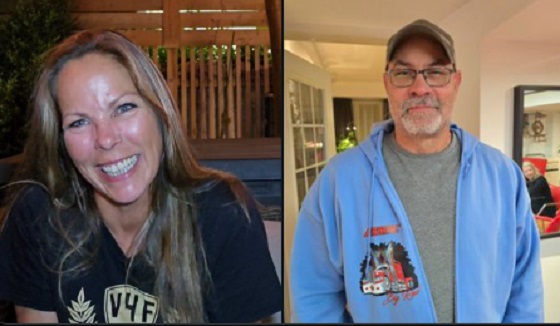
 COVID-191 day ago
COVID-191 day agoFreedom Convoy Sentencing: Lich and Barber escape prison terms but will spend months in house arrest
-

 Crime1 day ago
Crime1 day agoCanadian Sovereignty at Stake: Stunning Testimony at Security Hearing in Ottawa from Sam Cooper
-

 Alberta1 day ago
Alberta1 day ago‘Visionary’ Yellowhead Pipeline poised to launch Alberta into the future
-

 espionage2 days ago
espionage2 days agoCanada’s federal election in April saw ‘small scale’ foreign meddling: gov’t watchdog
-

 Crime1 day ago
Crime1 day agoThe Bureau Exclusive: Chinese–Mexican Syndicate Shipping Methods Exposed — Vancouver as a Global Meth Hub
-
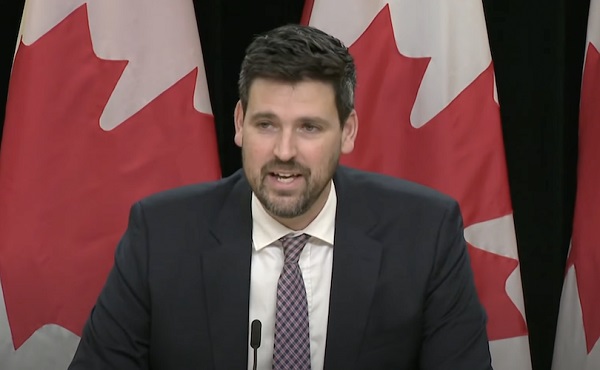
 Immigration2 days ago
Immigration2 days agoConservatives blame Liberals for allowing man on UK child sex offender list to enter Canada
-
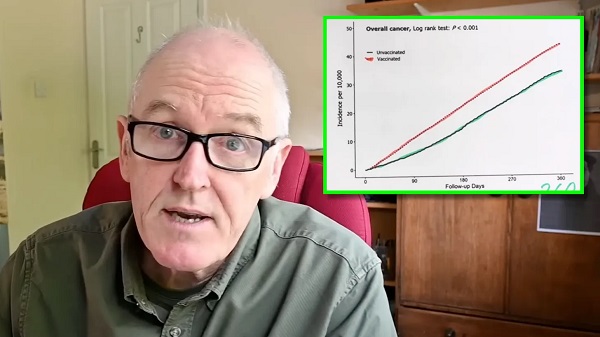
 COVID-1915 hours ago
COVID-1915 hours agoDevastating COVID-19 Vaccine Side Effect Confirmed by New Data: Study



